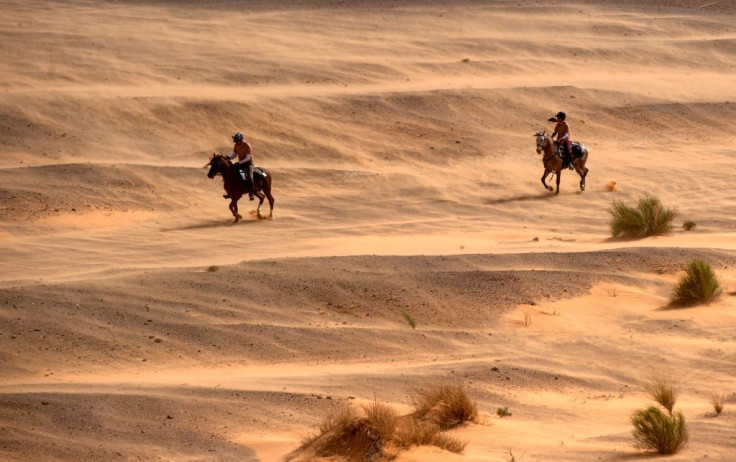Ancient Agriculturists Were Growing, Storing Cereal In Sahara 10,000 Years Ago

The Sahara could be an arid and inhospitable desert today but 10,000 years ago, the place witnessed lush green vegetation and early Africans had a crucial role to play in that, according to a group of researchers who found the first-ever known evidence of cultivation and storage of cereals in the region.
The group, from the University of Huddersfield, England, and the University of Modena & Reggio Emilia, Italy, explored a prehistoric site in the Libyan desert and found more than 200,000 ancient cereal seeds arranged in circular clusters.
Though ants are capable of moving seeds into massive concentrations like these, expert analysis confirmed it wasn’t the work of insects and bolstered the idea that hunter-gatherers frequented the site, dubbed Takarkori rock shelter, and took part in an early form of farming that contributed to the lush-green Saharan vegetation.
They also analyzed a select sample of seeds, which not only consisted of various kinds of grass but also had signs of threshing and winnowing. This confirmed the theory of early farming. Some seeds even had a different shape than normally seen.
In addition, further evidence of human activity from the ancient site like vestiges of root-woven baskets, pottery with chemical traces of cereal soup and cheese indicated early Africans were not just producing cereals for food, but were also storing them for future use.
However, it is worth noting the crops these early farmers grew were nothing like the domesticated crops grown today. They were weed-like wild plants or something that could grow anywhere, be it well-plowed or disturbed soil, and quickly adapt to changing environmental conditions.
This would have helped them survive the impact of climate change and could even offer an effective solution for our future generations to deal with global warming, according to the researchers involved in the work.
“The same behavior that allowed these plants to survive in a changing environment in a remote past makes them some of the most likely possible candidates as staple resources in a coming future of global warming,” the researchers said in a statement. "Our research suggests that, similarly to modern gatherers, we should pay renewed attention to these plants in the hope of finding innovative responses to tackle desertification and biodiversity loss."
Just a few days back, scientists from Princeton University warned rise in global warming levels by even half a degree could lead to over five million people, including residents of small island nations, being potentially flooded out of their homes within the next century.
The discovery and analysis of wild Saharan cereal seeds have been detailed in a paper published in journal Nature.
© Copyright IBTimes 2025. All rights reserved.



















